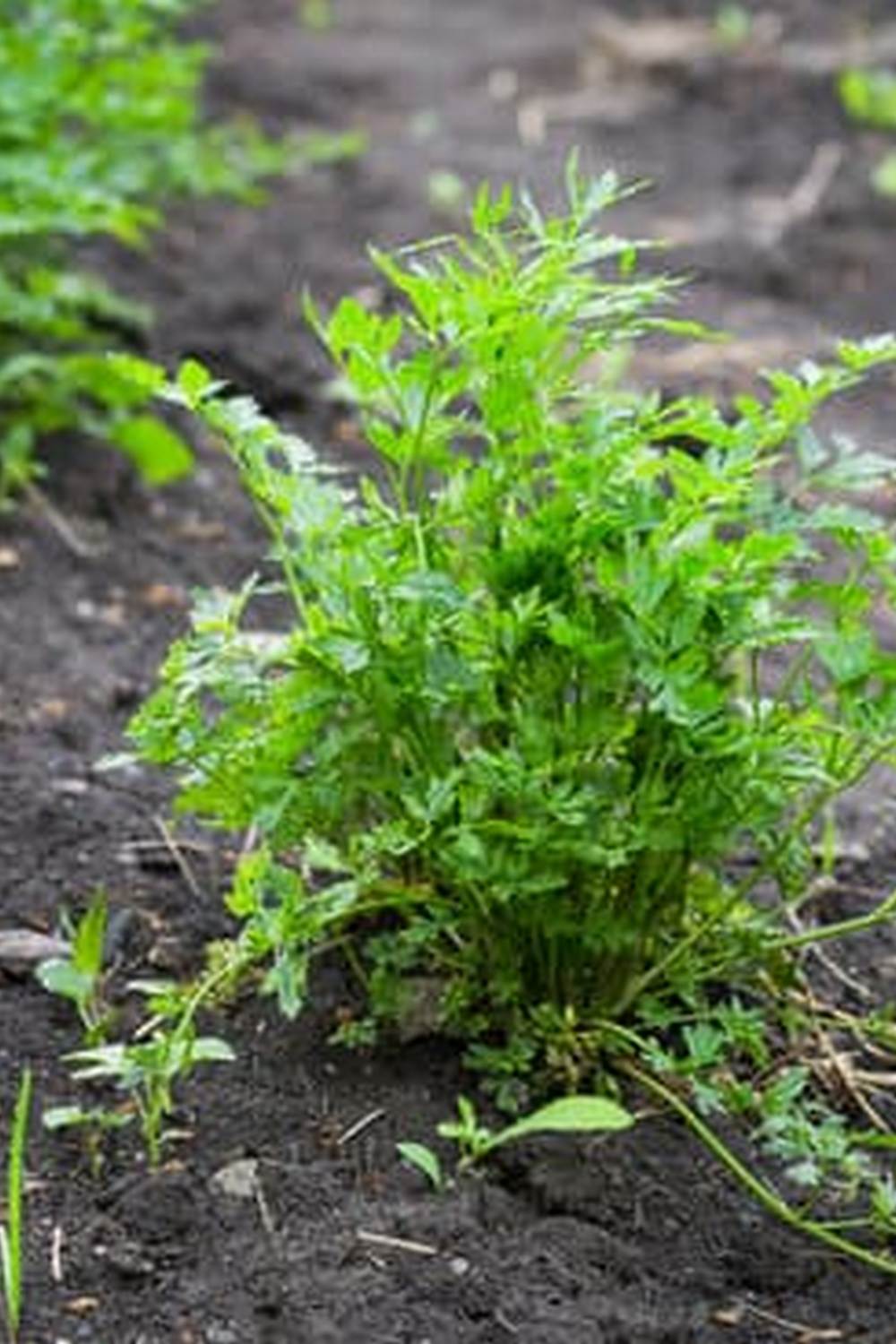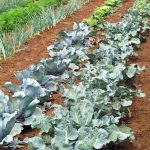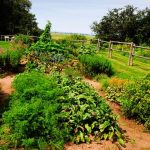Are you an Indian living in the USA and miss growing your own vegetables? Or are you simply a gardening enthusiast interested in trying your hand at Indian vegetable gardening? This article is for you.
Indian vegetable gardening has its own unique set of challenges, especially when attempting to cultivate traditional Indian vegetables in the United States. In this comprehensive guide, we will explore the intricacies of Indian vegetable gardening in the USA, from selecting the right vegetables to understanding climate and soil conditions, managing pests and diseases, all the way to harvesting and using Indian vegetables.
The popularity of Indian cuisine in the USA has led to an increasing interest in cultivating traditional Indian vegetables among the Indian diaspora as well as other gardeners. However, growing these vegetables in a different climate presents its own set of challenges. From finding the right seeds to adapting to new soil and weather conditions, there are several factors that need to be considered when embarking on an Indian vegetable gardening journey in the USA.
In this article, we will delve into the nuances of Indian vegetable gardening and offer practical tips for creating a successful garden. We will also take a look at success stories of individuals who have successfully grown Indian vegetables in the USA, as well as provide valuable resources for those looking to start their own Indian vegetable garden.
Whether you’re a seasoned gardener or a novice looking to explore something new, this guide is designed to help you navigate through the world of Indian vegetable gardening in the USA.
The Challenges of Growing Indian Vegetables in the USA
Another challenge is the availability of seeds and seedlings for Indian vegetables. While some varieties may be readily available at local nurseries or garden centers, others may require more effort to source.
In some cases, gardeners may need to order seeds from specialty suppliers or rely on online resources to obtain the specific varieties they are interested in growing. Additionally, finding accurate information on how to care for and cultivate these plants can also pose a challenge for those new to Indian vegetable gardening in the USA.
Furthermore, pests and diseases that affect Indian vegetables may vary from those commonly encountered by American gardeners. Learning about these potential issues and how to manage them effectively is essential for a successful Indian vegetable garden in the USA.
| Challenge | Solution |
|---|---|
| Climate differences | Use row covers or create microclimates to protect sensitive plants |
| Seed availability | Order seeds from specialty suppliers or find online resources for specific varieties |
| Pest and disease management | Educate oneself on specific pests and diseases that affect Indian vegetables and implement appropriate control measures |
Selecting the Right Vegetables for Indian Gardening in the USA
When it comes to Indian vegetable gardening in the USA, one of the most important aspects is selecting the right vegetables to grow. Due to the differences in climate and soil conditions between India and the USA, not all Indian vegetables may thrive in American gardens. However, with careful consideration and selection, it is possible to cultivate a variety of delicious and traditional Indian vegetables.
Popular Indian Vegetables for American Gardens
Some popular Indian vegetables that have been successfully grown in American gardens include bitter gourd (karela), bottle gourd (lauki), okra (bhindi), eggplant (brinjal), and fenugreek (methi). These vegetables are not only nutritious but also commonly used in Indian cuisine, making them an ideal choice for those seeking to recreate authentic flavors at home.
Adaptable Varieties
It is important to look for vegetable varieties that are adaptable to different climates and soil types. For example, there are specific varieties of eggplant and okra that have been bred to withstand cooler temperatures, making them suitable for cultivation in various regions of the USA. Additionally, it’s beneficial to seek out heat-tolerant varieties of Indian vegetables as some regions experience high temperatures during the growing season.
Availability of Seeds or Seedlings
Another factor to consider when selecting vegetables for an Indian garden in the USA is the availability of seeds or seedlings. While some varieties may be more commonly found in local nurseries or garden centers, others may need to be sourced from specialty suppliers or online retailers. It’s essential to plan ahead and ensure that the necessary seeds or seedlings are accessible before planting season begins.
Tips for Creating the Perfect Indian Vegetable Garden in the USA
Creating a successful Indian vegetable garden in the USA requires careful planning and consideration of various factors such as climate, soil conditions, and the selection of the right vegetables. Here are some tips to help you create the perfect Indian vegetable garden in the USA:
1. Select the right location: Choose a sunny spot with well-drained soil for your Indian vegetable garden. Most Indian vegetables thrive in full sun, so choose a location that receives at least 6-8 hours of sunlight per day.
2. Start small: If you are new to Indian vegetable gardening in the USA, it’s best to start with a small garden and gradually expand as you gain more experience. This will allow you to focus on a few key vegetables and master their growing requirements before taking on more crops.
3. Use raised beds or containers: Consider using raised beds or containers for your Indian vegetable garden, especially if your soil is not ideal for growing vegetables. This can help improve drainage and soil quality, which is important for the successful growth of Indian vegetables.
4. Plan for irrigation: Make sure to plan for proper irrigation to ensure that your Indian vegetables receive adequate water throughout the growing season. This may involve installing a drip irrigation system or hand-watering your plants regularly.
5. Incorporate companion planting: Take advantage of companion planting by growing complementary plants together in your Indian vegetable garden. This can help attract beneficial insects, repel pests, and improve overall plant health.
By following these tips, you can create a thriving Indian vegetable garden in the USA and enjoy a bountiful harvest of authentic Indian produce right in your own backyard.
Understanding the Climate and Soil Conditions for Indian Vegetable Gardening in the USA
When it comes to Indian vegetable gardening in the USA, understanding the climate and soil conditions is crucial for a successful harvest. The climate in the USA varies greatly depending on the region, so it’s important to select vegetables that are well-suited to the local climate.
For example, if you live in a cooler northern region, you may want to focus on vegetables that thrive in cooler temperatures such as spinach, potatoes, and carrots. On the other hand, if you live in a warmer southern region, you can consider growing heat-loving vegetables such as okra, eggplant, and tomatoes.
In addition to understanding the climate, it’s also essential to consider the soil conditions for Indian vegetable gardening in the USA. Different vegetables have varying soil requirements, so it’s important to test your soil and amend it accordingly. Most Indian vegetables prefer well-draining soil rich in organic matter. Adding compost or aged manure can help improve soil fertility and structure, creating an ideal environment for your Indian vegetable garden to thrive.
Proper watering is also essential when it comes to Indian vegetable gardening in the USA. Some Indian vegetables require consistent moisture while others prefer drier conditions. Understanding your local climate and its effect on soil moisture levels will help you determine the best watering practices for your specific vegetable garden.
| Climate & Soil Considerations | Indian Vegetables |
|---|---|
| Cooler Northern Region | Spinach, Potatoes, Carrots |
| Warmer Southern Region | Okra, Eggplant, Tomatoes |
| Soil Requirements | Well-draining soil rich in organic matter; adding compost or aged manure |
Common Pests and Diseases in Indian Vegetable Gardening and How to Manage Them
Pest Control
When it comes to Indian vegetable gardening in the USA, there are several common pests that can cause damage to your plants. These pests include aphids, caterpillars, and whiteflies. To manage these pests, it is important to regularly inspect your plants for any signs of infestation.
You can also use natural methods such as introducing beneficial insects like ladybugs or praying mantises to control the pest population. Additionally, there are organic insecticidal soaps and neem oil sprays that can be used as a safe alternative to chemical pesticides.
Disease Management
Diseases such as powdery mildew, damping-off, and blight can affect Indian vegetables in the USA. To prevent these diseases from spreading, it is vital to practice good sanitation in your garden. This includes removing any infected plant debris and ensuring proper air circulation among your plants. Using disease-resistant varieties of vegetables can also help to reduce the risk of diseases taking hold in your garden.
Integrated Pest Management
Implementing an integrated pest management (IPM) approach is essential for maintaining a healthy Indian vegetable garden in the USA. This holistic strategy involves combining different techniques such as cultural practices, biological controls, and if necessary, chemical interventions for pest and disease management. By using a combination of methods instead of relying solely on pesticides, you can effectively manage pests while minimizing harm to the environment and human health.
By being proactive in pest and disease management in your Indian vegetable garden in the USA, you can ensure a bountiful harvest of flavorful produce while maintaining a sustainable garden environment.
Harvesting and Using Indian Vegetables in USA
When it comes to Indian vegetable gardening in the USA, harvesting and using the produce is just as important as the growing process itself. Whether you are growing traditional Indian vegetables like okra, eggplant, and bitter gourd or experimenting with new varieties, knowing when and how to harvest them is crucial for enjoying the best flavors and nutritional benefits.
Harvesting Indian vegetables in the USA requires a good understanding of each vegetable’s maturity indicators. For example, okra should be harvested when it is about 3-4 inches long, while eggplants should be picked when their skins are glossy and firm.
Bitter gourd, on the other hand, can be harvested while still green for a less bitter taste. It’s essential to research each type of vegetable you are growing to ensure that you pick them at the right time.
Once you have successfully harvested your Indian vegetables, it’s time to put them to good use in your kitchen. Traditional Indian cuisine offers a wide variety of recipes that feature these vegetables as key ingredients. From flavorful curries to crispy pakoras, there is no shortage of delicious dishes that can be prepared using homegrown produce.
Additionally, fresh Indian vegetables can also be used in salads, stir-fries, pickles, and chutneys, adding a unique touch to everyday meals. Overall, harvesting and using Indian vegetables in the USA allows gardeners to enjoy the authentic flavors of homegrown ingredients while adding diversity to their culinary experiences.
Success Stories
While it may seem challenging to grow traditional Indian vegetables in the USA, many gardeners have found great success in cultivating these crops. Here are some success stories from individuals who have managed to create flourishing Indian vegetable gardens in the USA:
- Raj Singh from California has successfully grown a variety of Indian vegetables such as okra, bottle gourd, and bitter melon in his backyard garden. By creating raised beds and carefully monitoring watering and soil fertility, Raj has been able to recreate the ideal growing conditions for these vegetables, resulting in bountiful harvests year after year.
- Priya Patel from New Jersey has found innovative ways to overcome the challenges of growing Indian vegetables in a different climate. She has incorporated shade cloth and row covers to protect her plants from harsh sun and extreme temperatures, allowing her to grow delicate crops like fenugreek and drumstick with great success.
- Sanjay Sharma from Texas has utilized organic gardening methods to combat common pests and diseases that affect Indian vegetables. By practicing crop rotation and companion planting, he has been able to minimize the impact of pests such as aphids and whiteflies on his eggplant and spinach plants.
These success stories serve as inspiration for aspiring Indian vegetable gardeners in the USA, showcasing that with dedication, research, and strategic planning, it is indeed possible to cultivate a thriving garden filled with traditional Indian produce.
Resources for Indian Vegetable Gardening in the USA
In conclusion, Indian vegetable gardening in the USA is a growing trend that offers a way for individuals to reconnect with their cultural heritage while also enjoying the benefits of fresh, flavorful produce. While there are certainly challenges to growing Indian vegetables in the USA, including climate and soil considerations, with the right knowledge and resources, anyone can create a successful Indian vegetable garden.
By selecting the right vegetables, such as okra, eggplant, and bitter gourd, and understanding how to manage common pests and diseases, individuals can create a thriving garden that provides an abundance of delicious and nutritious produce. Additionally, learning about the climate and soil conditions specific to each region of the USA is essential for successful Indian vegetable gardening.
For those interested in starting their own Indian vegetable garden in the USA, there are numerous resources available including online forums, local gardening clubs or communities, and instructional videos. Success stories from other individuals who have managed to cultivate their own Indian vegetable gardens in the USA offer both inspiration and practical advice for newcomers. With dedication and perseverance, anyone can enjoy the rewards of Indian vegetable gardening in the USA.
Frequently Asked Questions
Can You Grow Your Own Vegetables in America?
Yes, you can grow your own vegetables in America. Many people in the US have small or large vegetable gardens in their backyard or community gardens. With the right knowledge and resources, it is definitely possible to grow your own produce.
Where Is the Best Place to Grow Vegetables in the US?
The best place to grow vegetables in the US depends on various factors such as climate, soil quality, and available sunlight. Generally, areas with a longer growing season and mild temperatures are great for vegetable cultivation. States like California, Florida, and Texas are popular for vegetable gardening due to their favorable conditions.
What Is the Most Popular Crop in US Home Vegetable Gardens?
The most popular crop in US home vegetable gardens is tomatoes. They are relatively easy to grow and can be used in a variety of dishes. Other popular crops include peppers, cucumbers, lettuce, and beans. These crops are commonly grown due to their versatility and usefulness in the kitchen.

If you’re looking to get into vegetable gardening, or are just looking for some tips on how to make your current garden better, then you’ve come to the right place! My name is Ethel and I have been gardening for years. In this blog, I’m going to share with you some of my best tips on how to create a successful vegetable garden.





